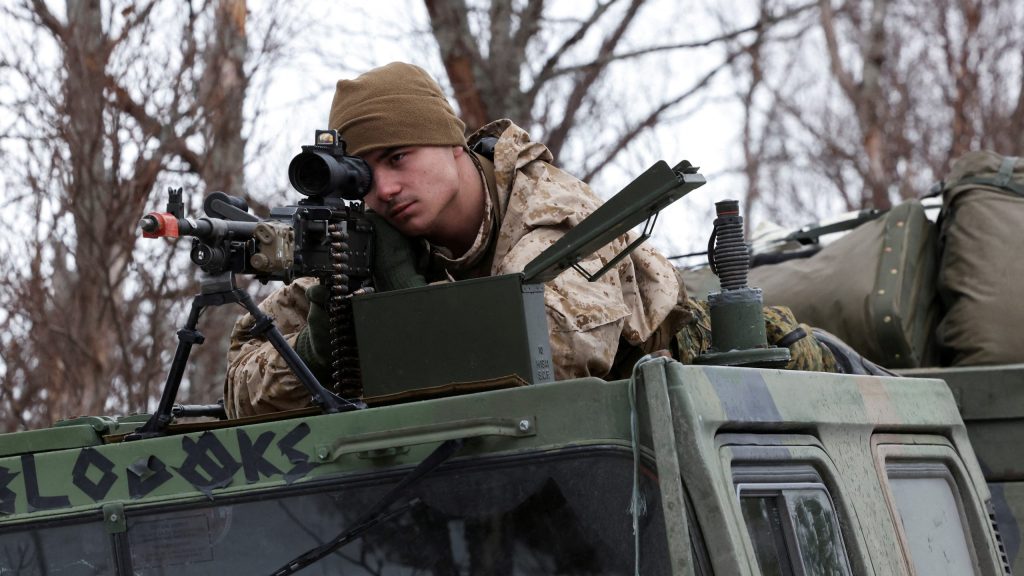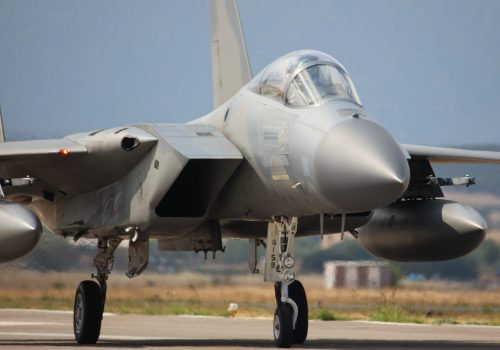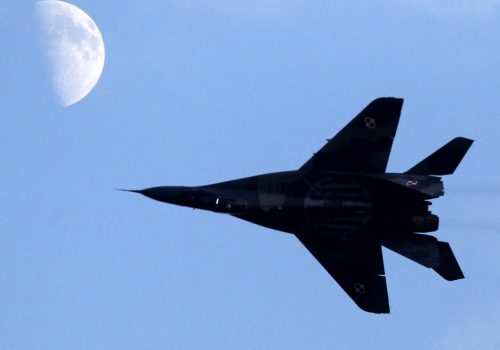Ukrainian President Volodymyr Zelenskyy’s historic address to a joint session of the US Congress last week was a statement of defiance against Russia’s brutal invasion of his country, an expression of gratitude for the West’s assistance, and an urgent call for more robust intervention.
But as NATO leaders convene for an extraordinary summit Thursday, they shouldn’t ignore the fourth key element of his speech: that it’s time for a new approach to ensuring global security. “The wars of the past have prompted our predecessors to create institutions that should protect us from war, but they, unfortunately, don’t work,” he said. “We see it. You see it. So we need new ones, new institutions, new alliances.”
While Zelenskyy was floating an idea for what he called a “United for Peace” coalition of peacekeeping countries, it might as well have been a direct challenge to NATO. And a justified one: The Alliance needs to do far more to counter the carnage and danger generated by Russia’s invasion.
That’s why it must commit to establishing a presence in Ukraine in the form of a humanitarian no-conflict zone.
Today, NATO faces both moral and strategic imperatives to respond to Zelenskyy’s call for help. Some 10 million Ukrainians (of a population of around 45 million) are now displaced, and while the United Nations estimates that at least 925 civilians have been killed, that number is likely far too low. Many more are subjected to Russia’s indiscriminate bombardment of cities, among other atrocities. The responsibility to protect looms large over the Alliance and the United States—which shouldn’t forget that Ukraine answered their calls for support in military operations in the Balkans, Afghanistan, and Iraq.
NATO’s advantages over Russia are overwhelming. Its force posture includes some 3.5 million active-duty military and civilian personnel, while allied defense budgets collectively exceed $1.2 trillion and include the world’s most advanced weapons systems. Russia, by comparison, fields only around 900,000 military personnel—who’ve shown themselves in Ukraine to be poorly trained, equipped, and led—backed by a budget totaling between $150 billion and $180 billion (by the most generous estimates). Russia’s economy is barely one twenty-fifth the size of that of NATO allies and partners.
Yet the Alliance has faltered amid Putin’s threats of escalation. His nuclear saber-rattling has led allies to remove their forces from Ukraine, convinced them that a no-fly zone should be off the table, and even effectively blocked the transfer of Polish MiG-29 fighter jets to Ukraine. If he achieves victory in Ukraine, Putin will likely further pursue his revanchist ambitions and move against other European nations, possibly even those in NATO. He essentially warned as much in his pre-invasion address.
The more the Alliance backs away from exercising its power to help defend Ukraine now, the more Putin is likely to feel emboldened—and the more NATO’s credibility will be tarnished in the eyes of its front-line Central and Eastern European member states. This is why NATO needs to ensure Putin’s defeat in Ukraine.
The rationale for a humanitarian no-conflict zone
With so much at stake, the Alliance should help Ukraine establish a humanitarian no-conflict zone in western Ukraine, which currently remains free of Russian troops.
Built around a ground- and air-based core of the NATO Response Force, a force presence should be deployed to secure that region’s largely uncontested territory—while making clear to Moscow that it’s a purely defensive move. To that end, it would leave substantial space between the humanitarian zone and Russian troops currently occupying Ukrainian territory hundreds of miles to the east.
The no-conflict zone would achieve several goals at once.
First, it would enable greater on-site international assistance for the many displaced and wounded Ukrainians suffering from Putin’s indiscriminate brutality—who are best cared for inside their own country rather than abroad. Second, it would help ensure the territorial perpetuation of the Ukrainian state. And third, it would free up Ukrainian forces now operating in western Ukraine (who are guarding against potential incursions from Belarus and Moldova) to more effectively concentrate against Russian forces advancing on cities further east.
The risk of conflict escalation would be manageable. While the protective force would need to be able to defend itself against potential Russian attacks, its deployment would not involve any offensive action. The underlying balance of power and principles of deterrence that have been successful in escalation control between Moscow and the West over the last seven decades remain fundamentally unchanged. Moreover, Russian President Vladimir Putin would need to decide whether or not to attack the no-conflict zone—and the poor performance of his forces in recent weeks suggests that such a move would be unlikely, lest they face the Alliance’s superior military (on top of their current fight with the Ukrainians).
Zelenskyy’s plea is one by a democratic European nation having its sovereignty torn away by military force—something we have not witnessed on this magnitude since World War II. The outcome of this conflict will define not only the future of European security but also NATO’s relevance as an institution. That’s why it must meet this moment with the only thing Putin understands and respects: decisive action.
Ian Brzezinski is a senior fellow at the Atlantic Council’s Scowcroft Center for Strategy and Security and previously served as US deputy assistant secretary of defense for Europe and NATO policy.
Further reading
Fri, Mar 18, 2022
A no-fly zone over Ukraine? The case for NATO doing it.
New Atlanticist By Richard D. Hooker, Jr.
The West stands at the crossroads. It's time to act by establishing a no-fly zone over Ukraine.
Fri, Mar 18, 2022
A no-fly zone over Ukraine? The case against NATO doing it.
New Atlanticist By Kelly A. Grieco
Intervening beyond providing weapons to Ukraine's military and food to the Ukrainian population would only make the nightmare worse.
Fri, Mar 18, 2022
A no-fly zone over Ukraine? The case for NATO helping in other ways.
New Atlanticist By
There’s plenty NATO member states can do to protect civilians on the ground short of shooting down Russian aircraft.
Image: US Marine take part in a military exercise in Evenes, Norway, on March 22, 2022. Photo by Yves Herman/REUTERS



